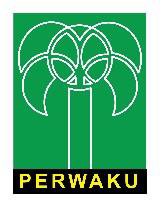An evaluation of a community-based forest restoration programme in Gunung Gede Pangrango National Park, West Java, Indonesia
Abstract
Forest restoration is needed to improve the condition of degraded ecosystems and boost up the ecological services. The existence of forest areas, especially in Indonesia, cannot be separated from the livelihoods of the people living around them. The purpose of this study was to evaluate whether the feasabiluty of the community-based forest restoration programme, implemented by the Gunung Gede Pangrango National Park Agency (BBGGPNP) and its partners, is feasible and can support efforts to restore forest ecosystem functioning and build community independence in managing the forest ecosystem. This study used the Context, Input, Process and Product (CIPP) method. This is an evaluation model which provides an analytical and rational basis for programme decision-making, based on a cycle of planning, structuring, implementing and reviewing and revising decisions, examined through a different aspect of evaluation context, input, process and product evaluation. Data were obtained from field observations, interviews and document analysis. Aspects of the programme ‘Context were found to be categorized as good and can become the basis for programme implementation, Programme ‘Inputs were also determined to be good, and fulfilled the criteria required to support the achievement of programme objectives. The ‘Process aspects were found to be sufficient, with key areas for improvement included the need for better coordination with partners and the need to respond to technical restoration requirements by adjusting the area of land to be restored, the number of trees to be planted, and by considering the technical rule of restoration. The ‘Product aspect of the programme were shown to be good, is shown by the achievement of the target amount and growth of trees and the increased capacity of human resources as well as the development of independent businesses in the ex-encroachers who were the programme participants. Based on these results, it can be concluded that the community-based forest restoration programme such as conducted by the GGPNP Agency is feasible and can be implemented in similar sites.
Restorasi hutan diperlukan untuk memperbaiki fungsi ekosistem hutan yang terdegradasi. Keberadaan kawasan hutan, khususnya di Indonesia, tidak dapat dipisahkan dengan penghidupan masyarakat yang tinggal di sekitarnya. Tujuan dari penelitian ini adalah untuk mengevaluasi apakah program restorasi hutan berbasis pemberdayaan masyarakat yang dilaksanakan oleh Balai Besar Taman Nasional Gunung Gede Pangrango (BBTNGGP) bersama mitranya, layak serta dapat mendukung upaya pemulihan ekosistem dan membangun kemandirian masyarakat. Penelitian ini menggunakan metode CIPP, yaitu model evaluasi pada aspek Context, Input, Process dan Product. Data diperoleh dari hasil observasi lapangan, wawancara dan analisa dokumen. Berdasarkan analisis data, dapat disimpulkan bahwa program restorasi hutan berbasis pemberdayaan masyarakat layak untuk diterapkan sebagai upaya memulihkan ekosistem dan membangun kemandirian masyarakat di sekitar hutan. Aspek Konteks program berkategori baik dan dapat menjadi dasar utama pelaksanaan program, Aspek Input program baik, telah memenuhi kriteria yang mendukung tercapainya tujuan program, Aspek Proses berkategori cukup, perlu melakukan koordinasi yang lebih baik dengan pihak mitra untuk lebih berkomitmen dan perlu untuk melakukan penyesuaian antara target luasan lahan yang direstorasi dengan jumlah pohon yang ditanam dengan mempertimbangkan aturan teknis restorasi. Aspek Produk berkategori baik ditunjukkan dengan tercapainya target jumlah dan pertumbuhan pohon dan meningkatnya kapasitas SDM serta terbangunnya usaha mandiri pada masyarakat eks perambah yang menjadi peserta program.
Keywords
References
Diantoro, T. D. (2011). Perambahan Kawasan Hutan Pada Konservasi Taman Nasional (Studi Kasus Taman Nasional Tesso Nilo, Riau). Mimbar Hukum, 23(3), 546565.
Hadi, P., Taufik, A., Fitriyani, R., Gunawan, D. R., & Putra, R. A. S. (2013). Mengukur Komitmen: Analisis Kebijakan Perencanaan dan Anggaran Nasional terhadap Pengelolaan Hutan dan Lahan di Indonesia. SEKNAS FITRA.
JICA RECA. (2014). Pedoman Tata Cara Restorasi di Kawasan Konservasi. Jakarta: JICA - RECA.
Jones, C. O., Baird, D. C., & Istamto, R. (1991). Pengantar kebijakan publik (public policy). Rajawali Pers.
Prihadi., N., Suriyono, B., Nurratyo, M., Nurzaini, R. R., Wati, E., & Zuleika, R. D. (2018). Standar kegiatan dan biaya Bidang Konservasi Sumber Daya Alam dan Ekosistem Tahun 2018. Ditjen Konservasi Sumber Daya Alam dan Ekosistem.
Qodriyatun, S. N. (2016). Restorasi Ekosistem di Hutan Produksi: Kontribusi Terhadap Konservasi dan Pemberdayaan Masyarakat Sekitar Hutan, dalam buku Ujianto Singgih Prayitno (Penyunting),2013, Pemberdayaan Masyarakat. Jakarta: P3DI.
Stufflebeam, D. L., & Shinkfield, A. J. (2007). CIPP model for evaluation. Evaluation Theory, Models, & Applications. San Fransisco: Jossey Bass.
Stufflebeam, D., & Coryn, C. L. S. (2014). Evaluation theory, models, and applications. 2nd, ed. San Fransisco: Jossey Bass.
Vásquez-Grandón, A., Donoso, P. J., & Gerding, V. (2018). Forest degradation: When is a forest degraded? Forests. 9. (11): 1-13. Diunduh dari https://www.mdpi. com/1999-4907/9/11/726 pada tanggal 3 Februari 2020.
Zhang, G., Zeller, N., Griffith, R., Metcalf, D., Williams, J., Shea, C., & Misulis, K. (2011). Using the Context, Input, Process, and Product Evaluation Model (CIPP) as a Comprehensive Framework to Guide the Planning, Implementation, and Assessment of Service-learning Programs. Journal of Higher Education Outreach and Engagement, 15(4), 5784.
DOI: 10.33751/injast.v1i2.2213
 Abstract views : 632
Abstract views : 632
Refbacks
- There are currently no refbacks.
Copyright (c) 2020 Indonesian Journal of Applied Environmental Studies

This work is licensed under a Creative Commons Attribution-NonCommercial-ShareAlike 4.0 International License.













